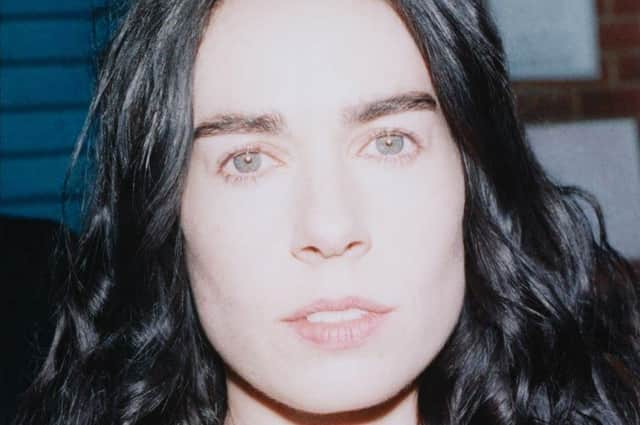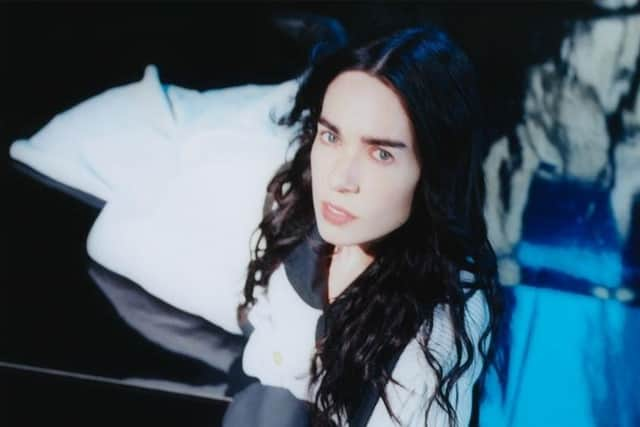Sinead O’Brien: ‘It’s not the type of album that I can tie up in one descriptive adjective’


Growing up in Limerick, she recalls that being a fashion designer had seemed the “impossible thing to do” while she was at art school. “The number of rejections was what you would hear about rather than the people who were pursuing it,” she says. “But I loved what it entailed, not just the challenge of saying I can do it, I loved doing it too.”
Through talent and perseverance she landed jobs with John Galliano in Paris, and then Westwood in London. Music, she says, “came about in a different way” to her fashion career. “I was playing casually with friends and performing or reading in private circles where we would share our work. It didn’t come about as an intentional challenge. But as soon as I felt like ‘I enjoy this and I like to throw myself into the first performance’, then I knew I had to start to build a core team of collaborators and build it up from there. But at that point I didn’t imagine a fixed outcome or anything.”
Advertisement
Hide AdAdvertisement
Hide AdO’Brien’s musical ambitions had begun aged five, when she asked her mother for piano lessons, following in the footsteps of her mother, who became a teacher. “She’s a really great player,” she says. “I started in a music school, which wasn’t great, it made me nervous. The building smelled like a convent, very cold, one of those auditorium-style places. I was complaining about the theory teachers because they were not making the shapes of the notes properly. But then my mum found me a private teacher. She was an antiques collector and came highly recommended and chose her students, she only had about four, and I stayed there until I was about 18. That was quite formative.”
Her first songs began life as poems, but the process has evolved over time. “For me it’s never been like a reading,” she says. “I’m not interested in reading poems in circles. So it’s like reading it in music, so I have this moment in real time where I react to what’s happening in the music and add on it and anticipate and syncopate – all the things you’d do if you weren’t singing.
“I found it intriguing to pair these two things together because it almost gives a third meaning for the words, it’s not just like how they sound in the music and not just how they are as he words mean, but also what it means when they’re dispersed in this way or how they scan rhythmically on the music.”
Touring with John Cooper Clarke was hugely informative, she says. “In conversation, he’s such a good listener as well. I was thrown in the deep end when I went on tour with him because they were sold out theatres and I hadn’t really performed that much yet, and he didn’t want me to have any music. That went against my instinct but at the same time my intuition did say, ‘Yes, do this and something good will happen’ and what did happen was I still felt there was musicality in the words. It almost pushed me to further the expression of my delivery, which was a good move because then when I came back to the band and the music I had jumped a few steps and the development was happening there live.”
Advertisement
Hide AdAdvertisement
Hide AdHaving made records with a band in the late 1970s and early 1980s himself, Cooper Clarke was “a bit jaded of the idea of the idea of music and words, he just wanted to strip it back”, but nevertheless O’Brien found the idea of being able to sell out theatres for performance poetry alone “quite cool in itself”.


O’Brien’s debut album Time Bend and Break The Bower has a “myriad different themes on it”, she says. “Every song is there for a purpose and every song has its place because of what it deals with thematically,” she adds. “It’s not the type of album that I can tie up in one descriptive adjective. For me, it’s like a library or a catalogue of chapters.”
The song Multitudes, for example, is about “creativity and desire and the flow state and all of the interruptions, and all the very boring and frustrating things which come at us that break into that state of mind”.
“I don’t know if that’s talking about a lot, but how fragile that state of mind is. When it becomes your sole focus it’s not that you can do it 24 hours a day, there’s so much time taken in building up these almost perfect conditions and then you’re up there on that hill. Sometimes it’s to do with discipline or your state of mind or a to-do list which you can’t help digging back into, or it can be physical interruptions – my loud neighbour who’s playing music and screaming through the wall or deliveries coming to the door six times a day, whatever it is. Some of them are boring and some of them are disturbing, all of those things coming in and fighting in here. That’s my precious space, that’s my gentle, calm and really grounded place, so that’s also why the song has a bit of a nylon acoustic (guitar), a bit of a folk sound as the base, but it also has these harder verses that come in and out.
Advertisement
Hide AdAdvertisement
Hide Ad“Somebody said those verses were very horrific or disturbing. I thought that’s great. I really wanted it to be so jarring because it can be so emotionally upsetting when I’m pulled in and out of these (states). It can be exhausting, different frames of mind or different states of body. In that song alone it’s like that whole thing explored.”
By her own admission, O’Brien has a fondness for the work of Mark E Smith of The Fall. “But I think anything he said would come across quite bad if someone else said it,” she cautions. “He was brutal about his band members. It’s almost the opposite of how I am with my collaborators.”
She prefers to take inspiration from the writing. “All of his songs are like mood boards, I just see them visually,” she explains. “They remind me of the mood boards I used to do at work, how all the different things can be placed up there on your imaginary wall and they can even change order. It’s like you have an open project on the computer of all the stems from the track, I can imagine when he was (performing) live he was playing will all of the different elements in real time, remixing the song live. I love that flexibility or elasticity that he has.”
Her other influences are “much more visual” than literary. “I read books all the time, of course, but there are a lot of visual references. I usually have about 100 images, they are like still from films or they’re photographers. I had a couple of Helmut Newton photographs, Henry Cartier Bresson, some things from exhibitions I’ve been to or random photographs. I found one on the internet one time and thought ‘this is exactly what the song Like Culture looks like, and then I started to go in more. Sometimes I find images that do not necessarily inspire my writing but they can add into it or it can come along somewhere in the process.
Advertisement
Hide AdAdvertisement
Hide Ad“But I don’t directly write about the imagery that’s in my research, either. They sit there and somehow when I get to writing a poem or writing lyrics, they’re like a prism, they just get hyper-focused into what comes out. Maybe not directly or maybe directly sometimes.”
The “forced break” of the Covid lockdowns was “actually life-changing”, O’Brien says. “It opened up this window of time that I’ve not had since I was a child,” she says. “Actually I don’t know if I’ve ever had that before because you’re dragged to school and university, I’ve never had these clear windows of thought in the morning which is my optimal time for writing. I can writing for four hours interrupted every morning, it’s what I love to do, so every time I have a free day at home, that’s how I start my day.
“Not being able to go anywhere or do anything forced me to look elsewhere for inspiration. I got tired of looking or the internet or reading books. At one point I didn’t feel like reading, so I started to go back into memories I had or ideas or thoughts, even ideas for discussions or topics I had for essays and build them out. A few of the songs actually happened in that way, so there’s some real memory in there and then some imagined or embellished story added on, but I think that was a good exercise. If you’re stuck inside or if you’re isolating, going to a cabin to write, you’re not going to write about the trees outside the cabin. You have what’s inside you, what you’ve been doing for the last month, year or however far back you want to go, and you also have what’s yet to come there with you.”
Time Bend and Break The Bower is out now. Sinead O’Brien plays at Brudenell Social Club, Leeds on October 11 and supports Belle and Sebastian at O2 Academy, Sheffield on November 11. www.facebook.com/sineadobrienpoetry
Comment Guidelines
National World encourages reader discussion on our stories. User feedback, insights and back-and-forth exchanges add a rich layer of context to reporting. Please review our Community Guidelines before commenting.